Authentic Sichuan Mapo Tofu Recipe
Sichuan Mapo Tofu, a renowned spicy tofu dish in Chinese cuisine, is a delight to prepare at home with this authentic recipe. Combining soft tofu and ground pork in a rich, savory sauce, it guarantees a satisfying meal that pairs perfectly with a bowl of rice
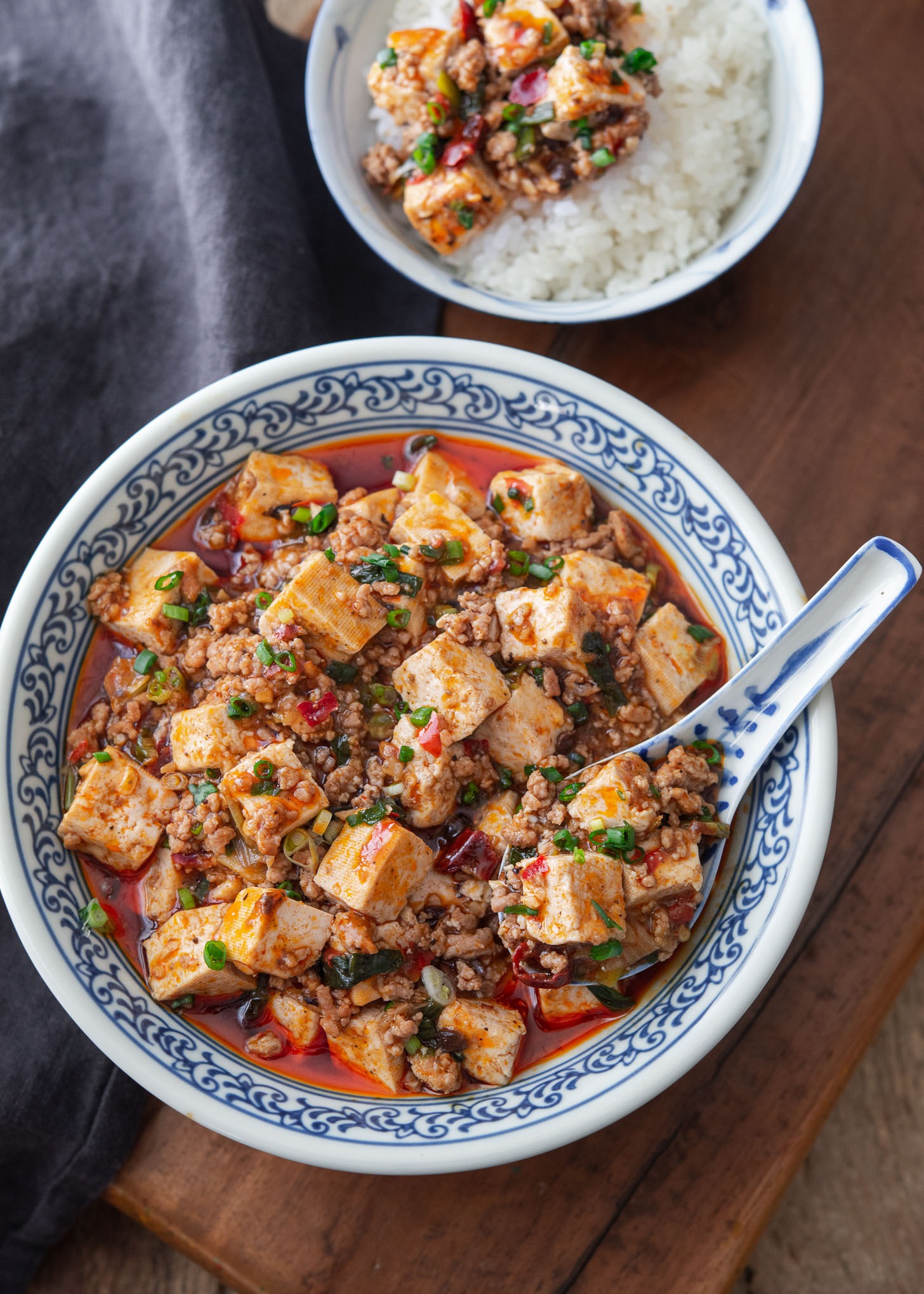
Looking for an easy and simple way to create an authentic Chinese mapo tofu (麻婆豆腐) dish at home?
This classic Sichuan tofu recipe is perfect for anyone who loves bold flavors and spicy food. You’ll feel like you’re dining at a restaurant. Once you taste it, you’ll find it hard to resist going back for seconds.
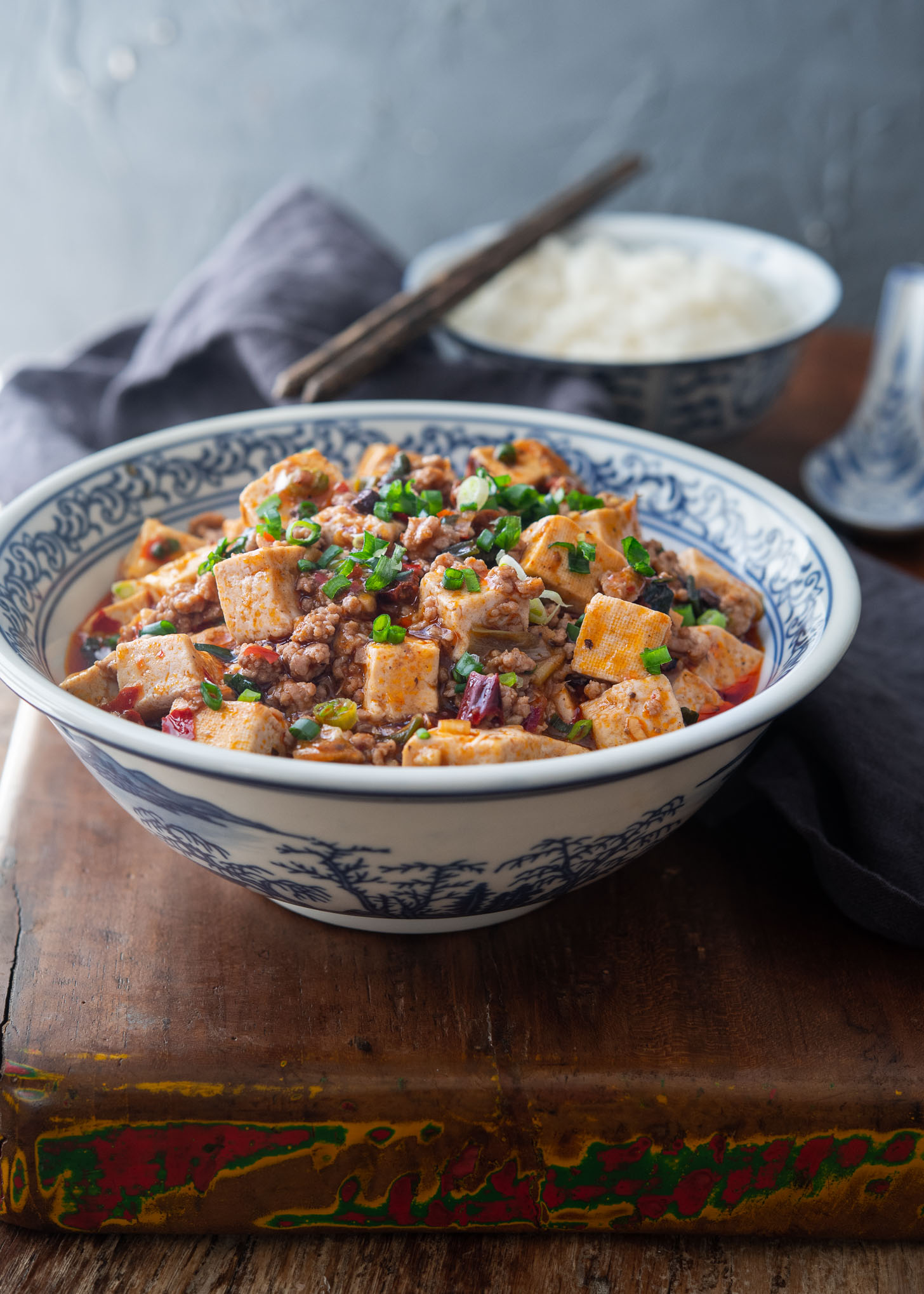
What is Mapo Tofu and Its History?
Originating in the Sichuan province of China, mapo tofu is a beloved Chinese tofu dish known for its spicy and flavorful taste.
This dish includes soft tofu, minced pork meat, doubanjiang (fermented chili paste), and signature Sichuan Peppercorn for a unique “numbing” sensation.
Mapo tofu, or Ma Pot tofu, is named after its creator, Chen Ma Po, a woman who owned a small restaurant in Chengdu.
Chen was known for her tofu dish, which she served to laborers who would stop by her restaurant with their own rice. They loved the spicy, flavorful tofu dish she prepared using affordable ingredients such as tofu, beef, and local Sichuan peppercorns.
The name “Mapo Tofu” literally translates to “pockmarked grandma’s tofu,” referring to the facial features of its creator. Chen’s innovative and delicious dish quickly gained popularity among locals and travelers, and it continues to be a beloved staple of Sichuan cuisine worldwide.
Key Ingredients in Mapo Tofu
This mapo tofu recipe requires simple ingredients commonly used in Sichuan Chinese cooking. Here are a few things to note:
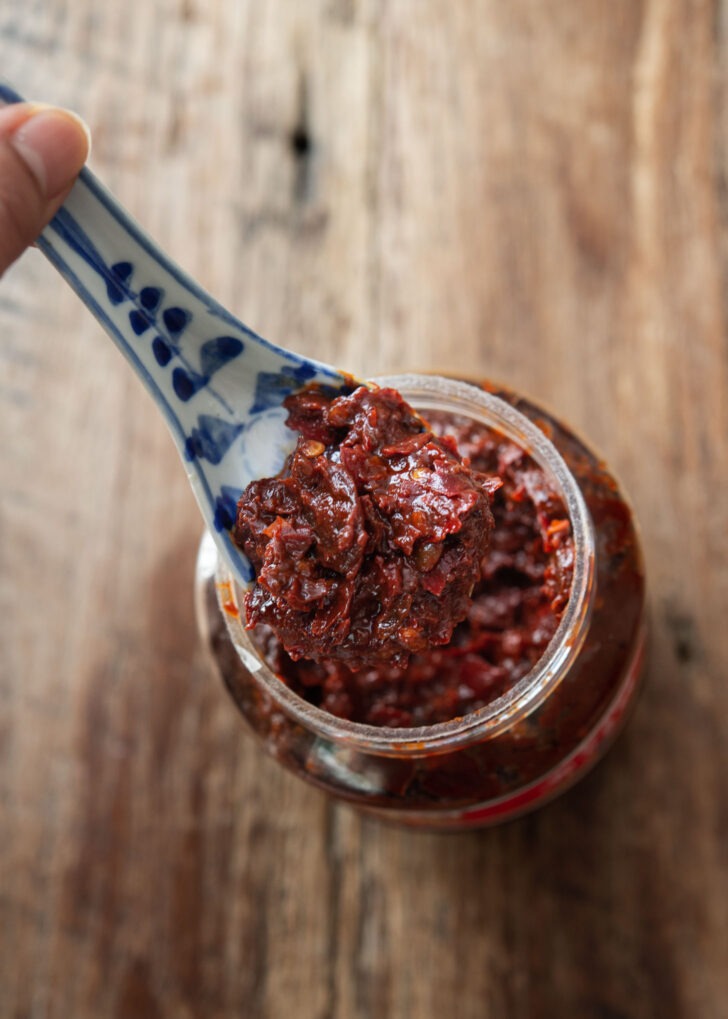
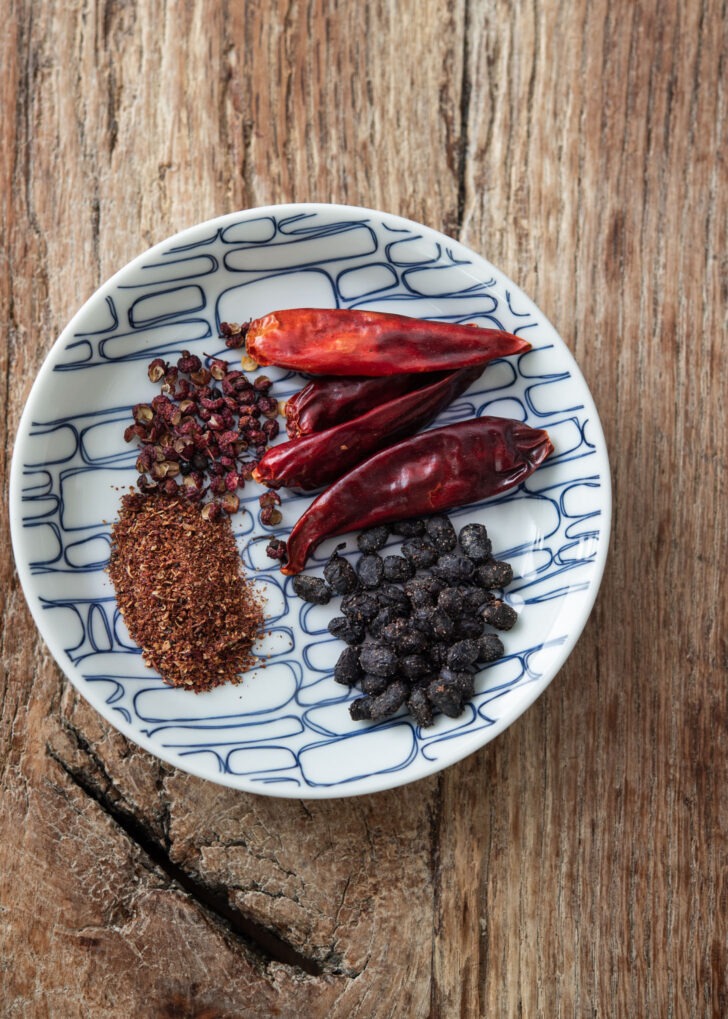
Doubanjiang (fermented chili paste)
In Chinese cuisine, Doubanjiang is a commonly used spicy sauce particularly in Sichuan cuisine. It is also known as fermented chili paste or broad bean paste. The paste is made from fermented broad beans, soybeans, salt, and red chili peppers.
The mixture ferments for several months, resulting in a rich, savory flavor with deep umami and spicy notes. When making mapo tofu, Doubanjiang is a crucial ingredient that cannot be substituted.
Note: For premium broad bean paste, try “Pixian Broad Bean Paste” available at local Asian markets or online retailers. It hails from Pixian, a small county in Sichuan province.
Sichuan peppercorn
Sichuan peppercorn is another Chinese spice in Mapo tofu. The peppercorn provides a unique tongue-numbing sensation and enhances the spicy flavor of the dish.
You can add Sichuan peppercorn to the dish as either a powder or whole seed, alone or in combination with other spices. It adds a distinctive, citrusy flavor that pairs well with the heat of the dried chili peppers and the savory notes of the fermented chili paste.
Douchi (fermented black beans) – optional
Fermented black beans provide umami depth and balance the heat of Sichuan peppercorns in Mapo tofu. This ingredient is often used with doubanjiang in Sichuan cuisine, giving dishes like Twice-cooked Pork their distinct flavor.
The combination of fermented black beans, doubanjiang, and other seasonings creates the signature complexity of the dish. While essential, omitting them won’t drastically alter the dish’s taste.
Soft tofu
Choose soft tofu for its tender texture that holds shape when cooked. Unlike firm tofu, it has a silky, smooth consistency that allows absorption of the rich, spicy sauce, enhancing the dish’s flavor.
Note: Avoid silken tofu as it lacks firmness, easily breaking apart in the spicy sauce and leading to a mushy texture.
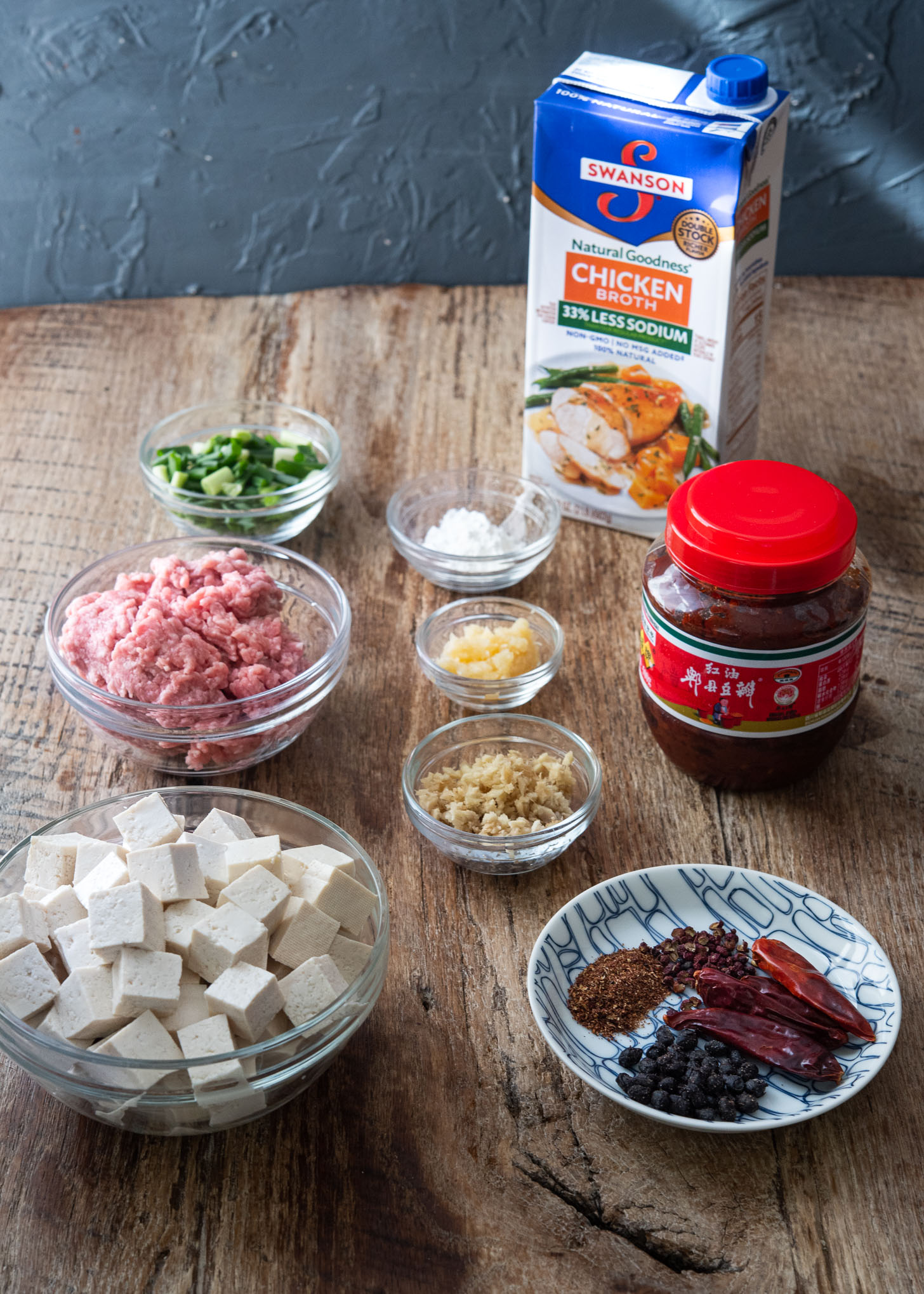
Other ingredients you’ll need
- Dried red chili: Sichuan dried red chili works the best but other dried red chili works as well.
- Green onion: to add savory flavor
- Garlic and Ginger: to add spicy flavor and aroma.
- Ground pork: adds a rich and savory flavor to the dish.
- Chicken stock: provides moisture and rich taste to the sauce
- Starch water: a mixture of water and cornstarch as a thickening agent to give the sauce a silky and glossy texture.
Step-by-Step Guide to Making Mapo Tofu
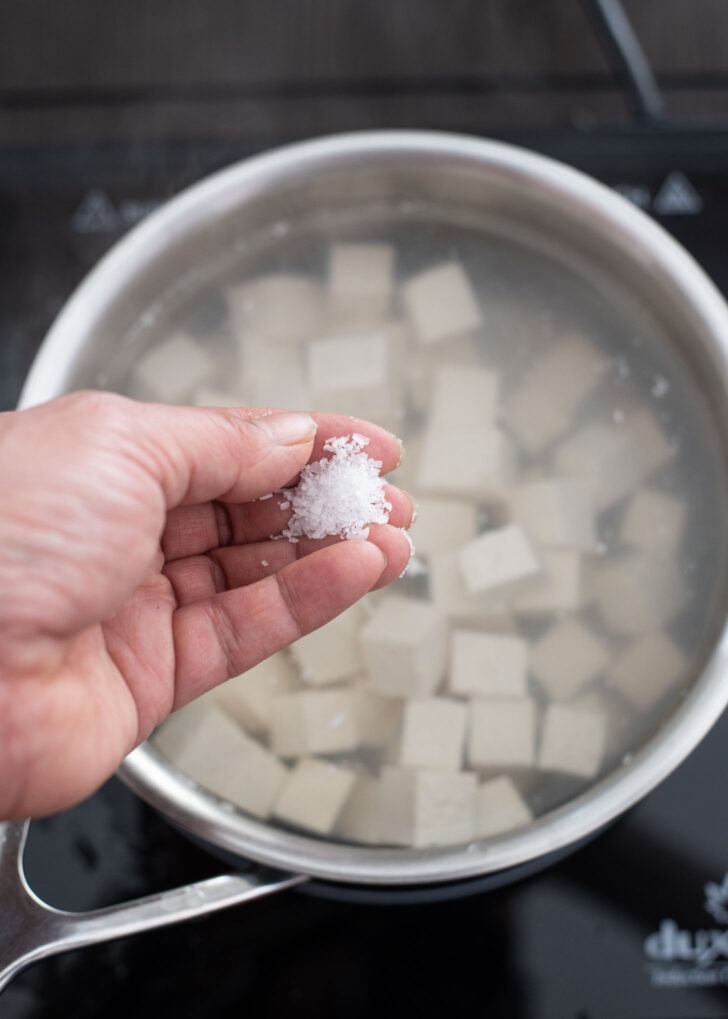
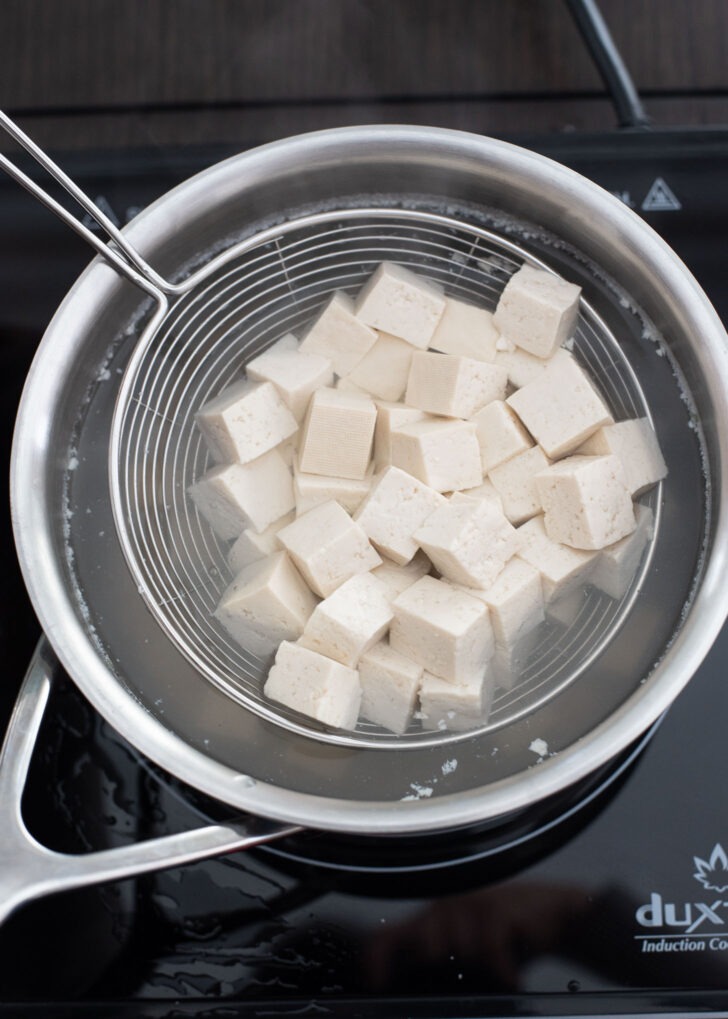
Step 1. Blanch the tofu
Cut the tofu into small cubes. Bring a large pot of water to boil and add a pinch of salt. Add the tofu to the pot and cook for 1 minute. Drain and set aside.
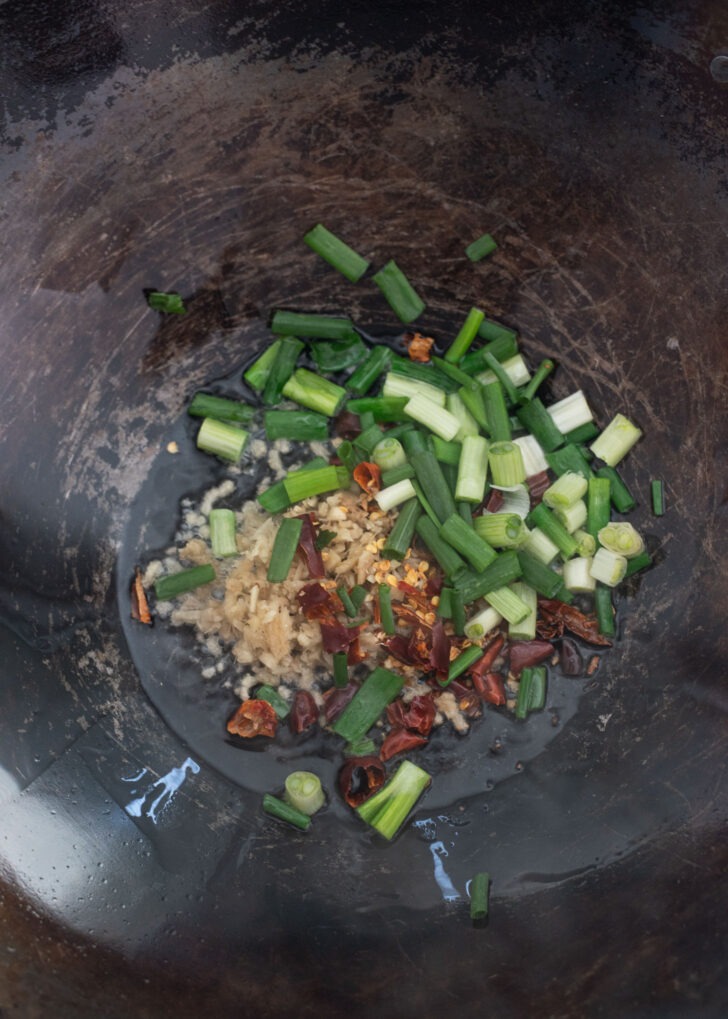
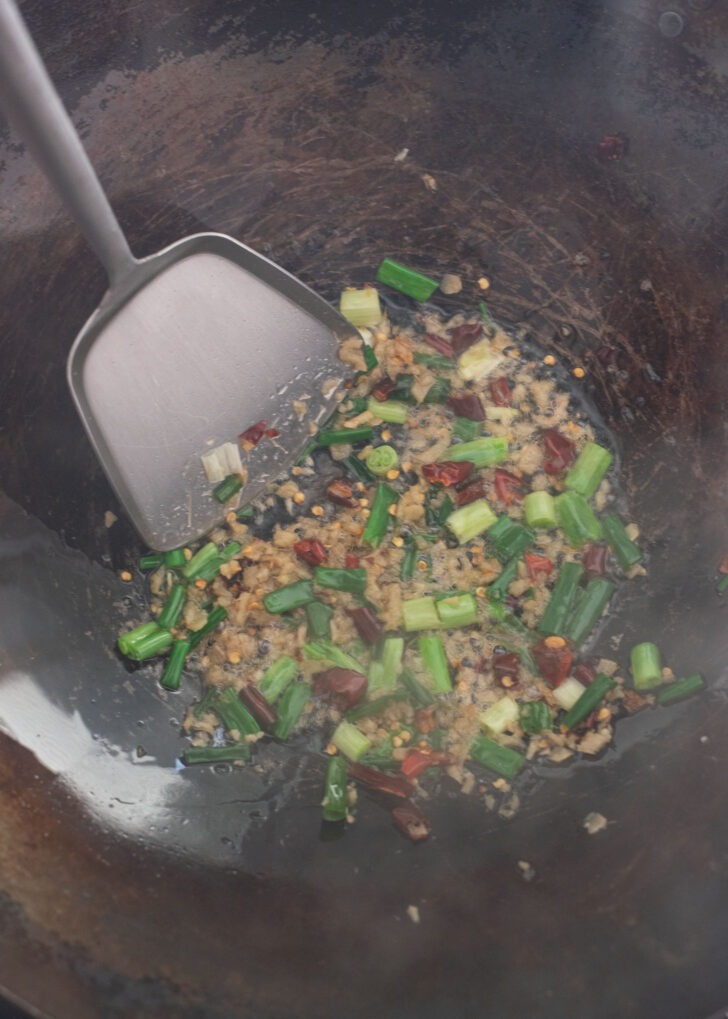
Step 2. Fry the Aromatics
Heat a wok or large skillet over medium heat and add vegetable oil. Add ginger, dried crushed chilies, and green onion and stir fry until fragrant, about 30-60 seconds.
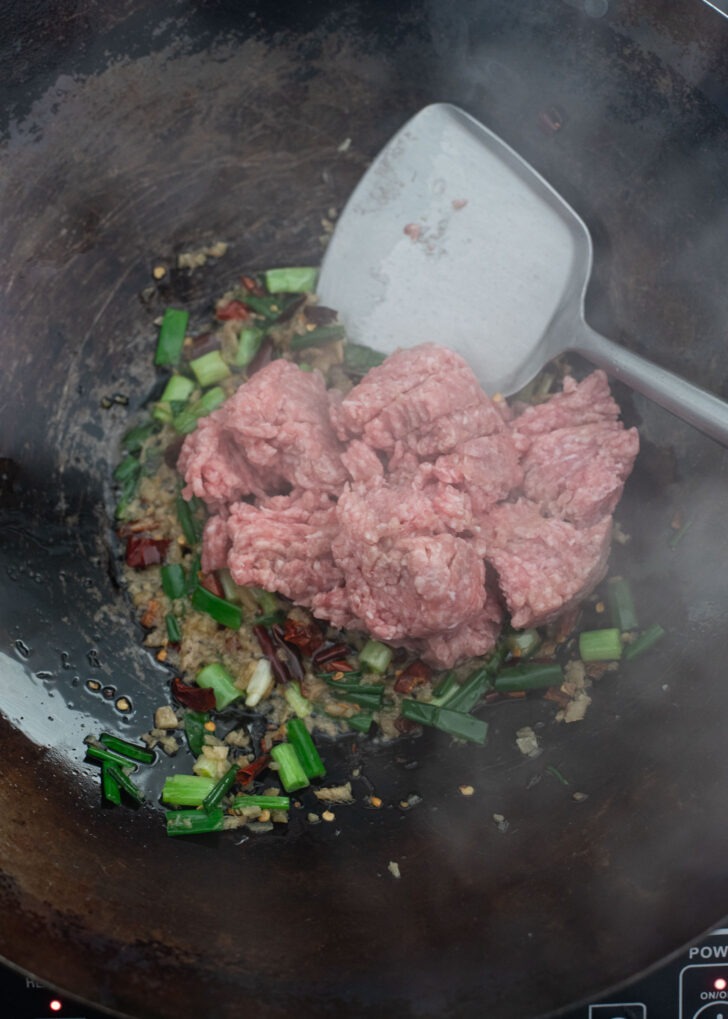
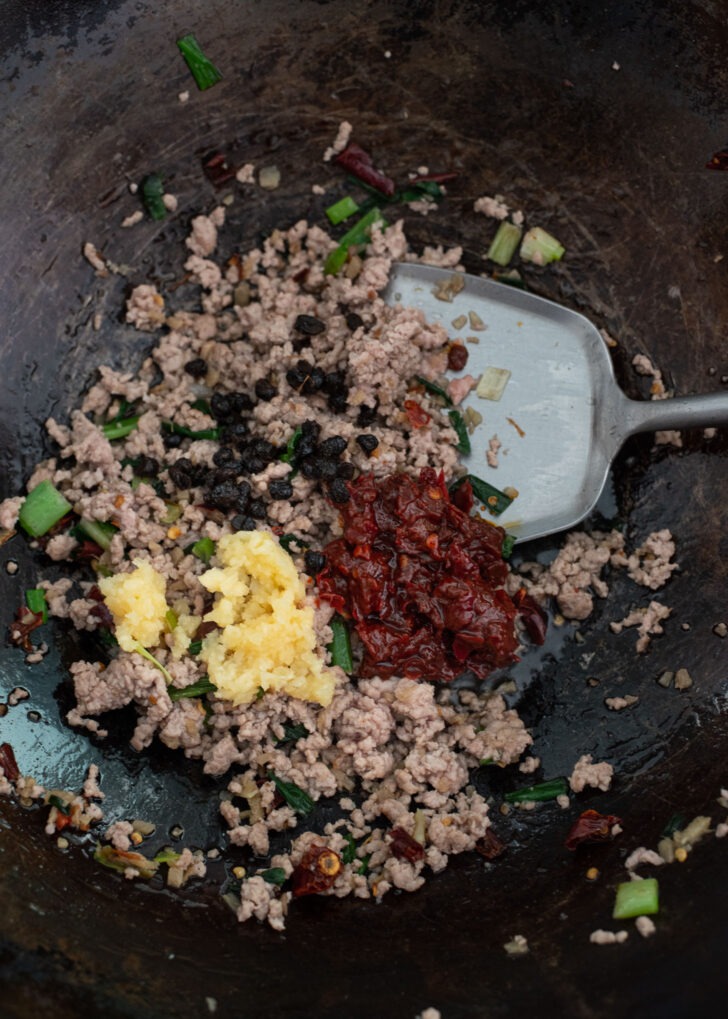
Step 3. Add the Meat
Increase the heat to medium-high. Next, add the ground pork and cook until browned and crispy, breaking up any large pieces with a spatula.
Step 4. Make the Sauce
Add doubanjiang, fermented black beans (if using), and garlic to the wok or skillet. Stir-fry for about 30 seconds until fragrant.
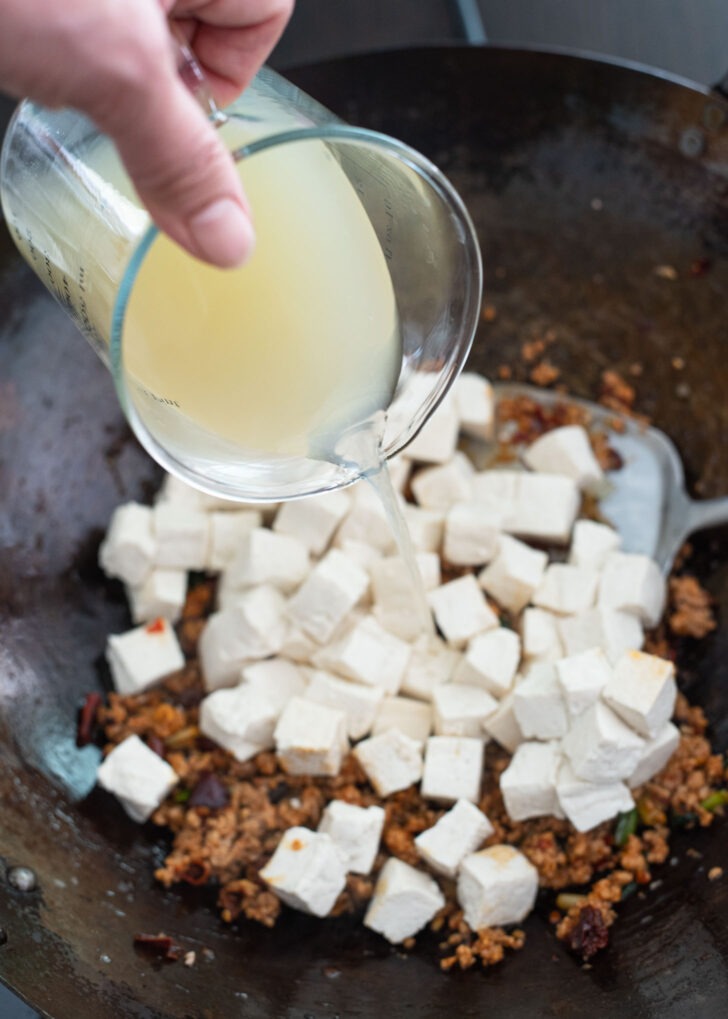
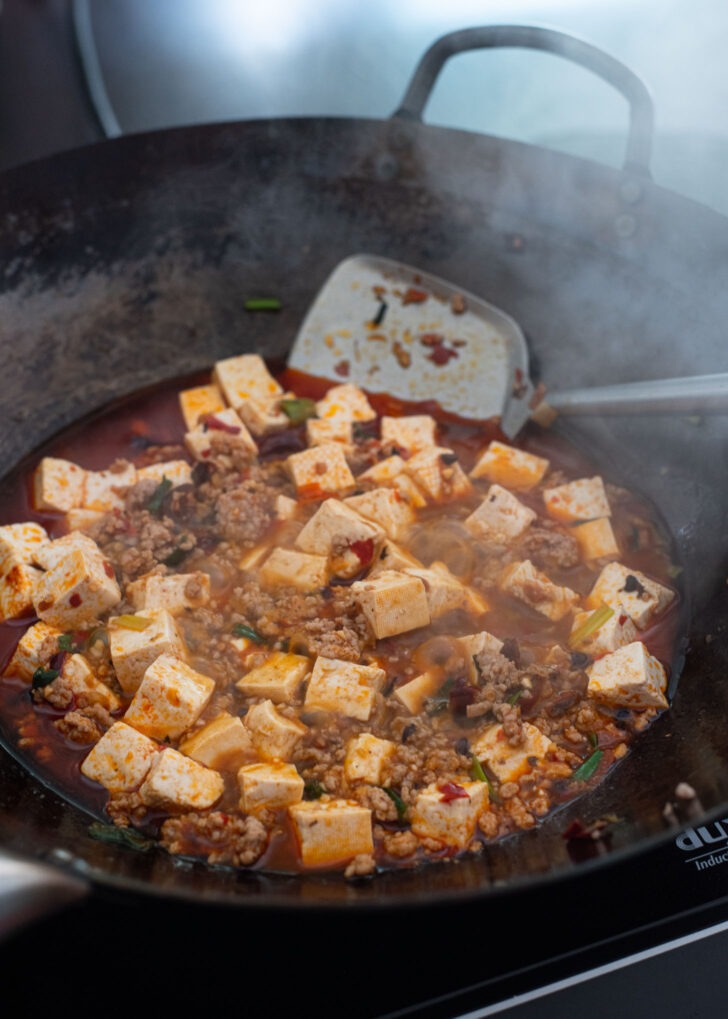
Step 5. Add the Tofu and Simmer
Add the blanched tofu and chicken stock to the wok or skillet and bring to a boil. Reduce the heat to medium-low and simmer for 5-7 minutes, until the tofu is heated through.
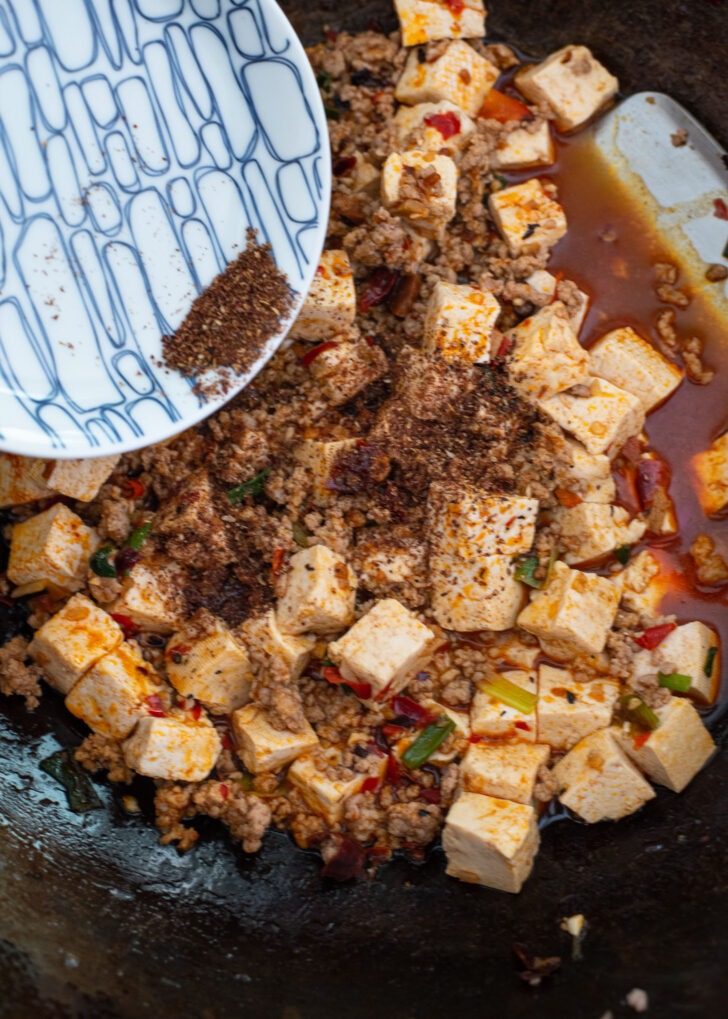
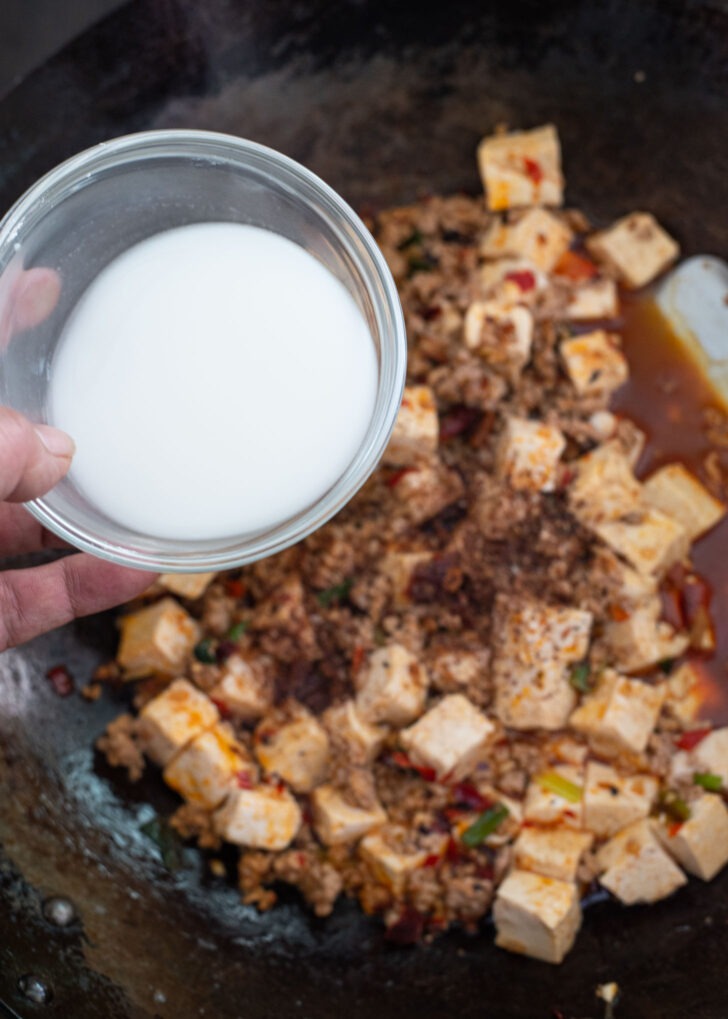
Step 6. Thicken the Sauce
Add ground Sichuan pepper and stir. In a small bowl, mix together the cornstarch and water to make a slurry. Add the slurry to the wok or skillet and stir gently to thicken the sauce.
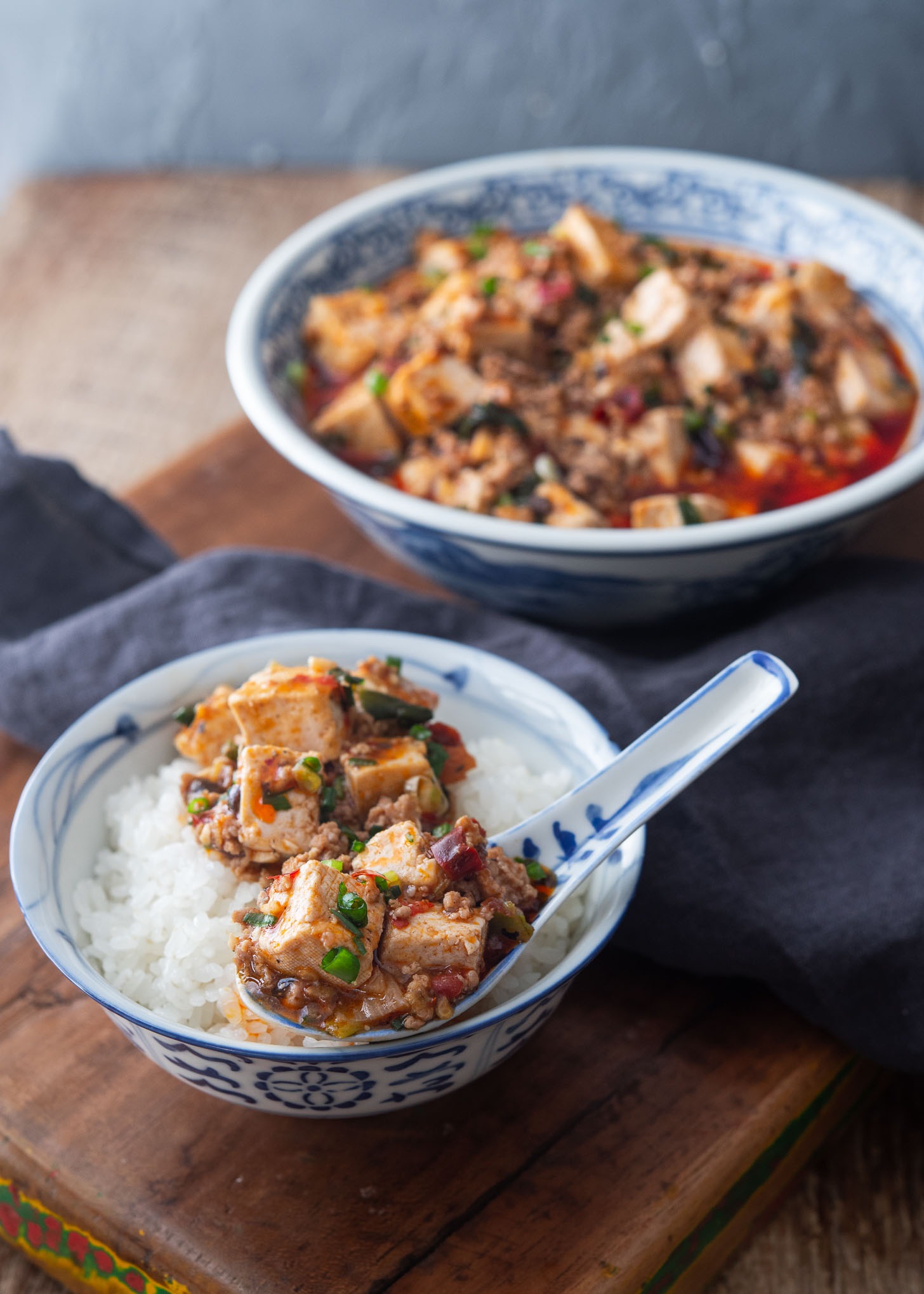
Step 7. Garnish and Serve
Garnish with sliced green onions and more Sichuan pepper if desired. Serve hot with steamed rice.
Tips for Vegetarian or Vegan Adaptation
To make a vegetarian or vegan version, replace the ground pork with mushrooms or a plant-based meat. Substitute chicken stock with vegetable stock. Alternatively, omit the pork and use tofu exclusively, but reduce the amount of seasoning and condiments.
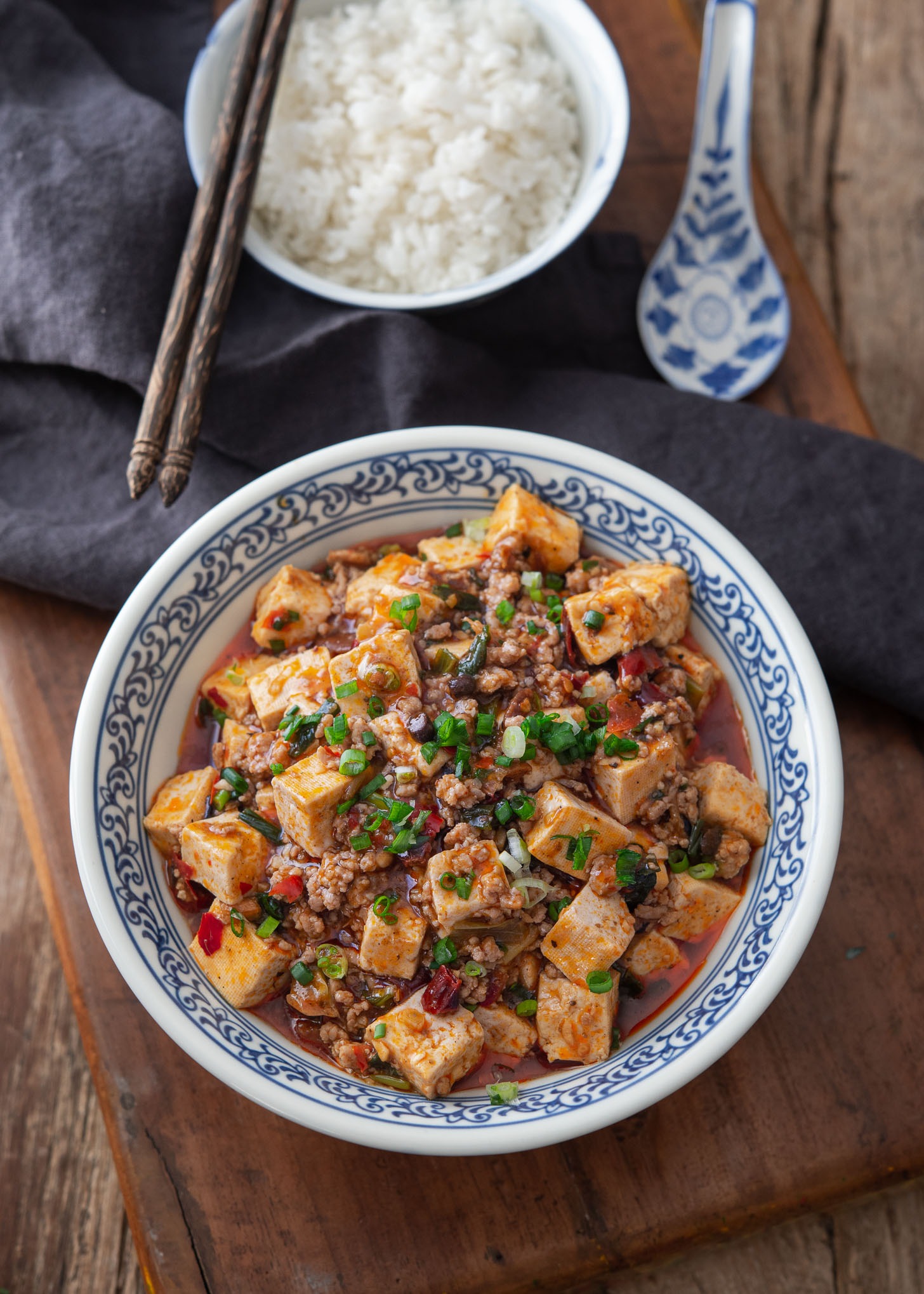
There you have it! This Mapo Tofu recipe is a gateway to authentic Sichuan cuisine right in your kitchen. Simple to prepare yet rich in flavor, it brings an Asian comfort food to your table.
Try it today, and savor the unique taste of this cherished Chinese dish.
5 Classic Chinese Dishes to Try at Home
Explore the delightful flavors of traditional Chinese cuisine through these five easy-to-make dishes ideal for home cooking.
- Twice Cooked Pork (Authentic Sichuan Pork Stir-Fry)
- Chinese Beef and Pepper Stir-fry
- Easy and Authentic Kung Pao Chicken
- Chinese Crispy Beef
- Blanched Choy Sum with Garlic Sauce

Authentic Sichuan Mapo Tofu Recipe
Ingredients
- 1 lb (450 g) soft tofu, sliced into 1/2-inch cubes
- 4 tbsp (60 ml) oil
- 3 tbsp minced ginger
- 3-4 dried red chilies, sliced
- 3 green onion, chopped
- 1/2 lb (225 g) minced pork
- 2 tbsp Sichuan chili bean paste (doubanjiang)
- 1/2 tbsp fermented black beans (douchi), optional
- 1 tbsp minced garlic
- 1 cup (240 ml) chicken stock, low sodium preferred
- 1-2 tsp Sichuan peppercorn powder
- 2 tsp cornstarch
- 3 tbsp (45 ml) water
Instructions
- Bring a large pot of water to boil and add a pinch of salt. Add the tofu to the pot and cook for 1 minute. Drain and set aside.
- Heat a wok or large skillet over medium heat and add vegetable oil. Add ginger, dried crushed chilies, and green onion and stir fry until fragrant, about 30-60 seconds.
- Increase the heat to medium-high. Add the ground pork and cook until browned and crispy, breaking up any large pieces with a spatula. Add doubanjiang, fermented black beans (if using), and garlic to the wok or skillet. Stir-fry for about 30 seconds until fragrant.
- Add the blanched tofu and chicken stock to the wok or skillet and bring to a boil. Reduce the heat to medium-low and simmer for 5-7 minutes, until the tofu is heated through.
- Add ground Sichuan pepper and stir. In a small bowl, mix together the cornstarch and water to make a slurry. Add the slurry to the wok or skillet and stir gently to thicken the sauce. Garnish with sliced green onions and more Sichuan pepper if desired. Serve hot with steamed rice


Fantastic, I love this dish and love this version.
Hi there, would I be able to substitute gochugaru paste for the doubanjiang? Thanks in advance!
Hi Megan
Doubanjiang is the key ingredient in the mapo tofu dish if you want it to be authentic. You can tweak it by using a mixture of gochugaru, a little bit deonjang (Korean soybean paste), and oyster sauce. The mixture makes it own flavor, but not the authentic mapo tofu taste. Hope this helps.
Holly, I’m always confused by the Sichuan pepper. Most I’ve seen are riddled with stems & such, plus the husks. OK, so…husks are good? Should this be filtered at home somehow? Should I grind everything into a powder for ease of use? Just chew the husks up? (seems unpleasant to me in a meal). I’ve tried many of your recipes with great success & Mapo Tofu is very appealing. Thanks, Bill in Oregon.
Hi Bill
I would remove the stems. You can remove the husks if you prefer milder taste. However, husks contain a lot of the unique flavor of Sichuan peppercorn, so many people prefer to leave them on. I usually grind the whole peppercorn to powder and love the numbing taste and the fragrance. It really is personal preference. It makes me so happy to hear that you’ve tried many of my recipes. Thank you so much!
Thanks for the info for future use. I’ve been unsure for years….lol….so passed them by mostly. I’ll grind as needed for best flavor. Hope you’re enjoying your new home. Yes, I’ve made many & enjoyed each, this one will be next! Regards, Bill
Holly,
Why on Earth are your measurements all Imperial… The whole world uses metric these days… Even here in the UK where this system originates… It is so annoying to have to convert to normal units… Please change or give both.
Regards,
Mark
Hi Mark
I understand that you may be feeling frustrated. As a blogger based in the U.S., the majority of my visitors come from North America and are more familiar with imperial measurements. However, I have been considering adding metric measurements to my recipes for those who are not familiar with the imperial system. I have updated the recipe to include both types of measurements.
Many thanks for the metric measurements Holly!
It was a little incongruous, given that all the nutritional info is metric 😉
I must say this is an authentic recipe , good job, Maria. I got an opportunity to attend free cooking classes while I was studying Mandarin in Beijing, China. we can get Sichuan pepper easily here in Indonesia.
I am sorry, it us Holly not Maria.
What are SOCIAL MEANINGS OF THE DISH
Haha I also thought it was named after Mapo-gu! Last time I was in Seoul we stayed at the Mapo Lotte hotel. I wasn’t familiar with that area before so I began to think that mapo tofu was a chic dish when in reality I just learned it has rather rustic and humble beginnings. Thanks for the food-history lesson!
I love Mapo tofu! I make this dish a lot and order it frequently when I eat at Chinese restaurants. Thanks for the history lesson on the woman behind Mapo tofu! I’m Chinese but didn’t know the story about the widow with the gifted tofu and pork. What a touching story!
There are so many great flavors going on here. I love the story behind this dish!